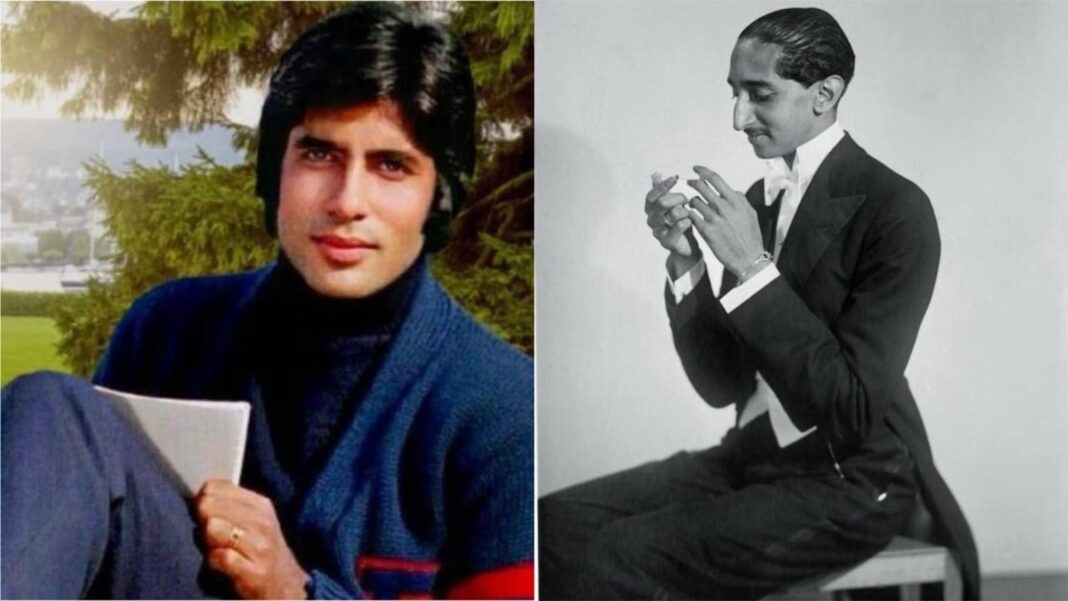Canadian fashion commentator Derek Guy, known as ‘the menswear guy,’ recently took to X to spotlight some of the finest-dressed individuals from India. In response to a challenge from an X user who dared him to name a well-dressed Indian, Derek replied, “I’d be glad to. Here are some well-dressed Indians,” and shared an engaging thread on Twitter. Let’s explore his selections more closely. (Also read: Even Tamannaah Bhatia’s simple cargo pants cost ₹59K; here’s what she wore to Manish Malhotra’s house with Vijay Varma )

Yashwant Rao Holkar II’s royal style
Derek Guy initiated his thread by applauding Yashwant Rao Holkar II, the Maharaja of Indore, as one of the best-dressed Indians. Referring to him as the first individual who sprang to mind, Derek admired his chic wardrobe, stating, “He sometimes donned stunning attire that I can only presume is traditional to Indian culture.”
While acknowledging his limited understanding of non-Western clothing, Derek concentrated on Yashwant Rao’s Western ensembles, describing his white-tie appearance as “exquisitely tailored—collar embraces the neck, no divots, flawless peak lapel and gorge.”
Derek even juxtaposed Yashwant Rao’s refined tailoring with former U.S. President Donald Trump’s outfits during his visit to the Queen, critiquing the length of Trump’s waistcoat while lauding Yashwant Rao’s impeccable proportions. He remarked, “By keeping the white waistcoat shorter than the tailcoat, you maintain the suit’s harmony—far more elegant.”
Derek continued, praising the Maharaja’s “striking double-breasted” styles and commending the craftsmanship, adding, “The full, curvy roll on that lapel signifies quality pad stitching.” While he suggested lowering the buttoning point slightly, he acknowledged that the overall artistry was indisputable. The critic then shifted focus to Yashwant Rao’s traditional coats, highlighting a polo coat and an Ulster, both exuding elegance.
Derek admired Yashwant Rao’s meticulous attention to details, like back-stitched lapels, and his safari-inspired ensemble featuring tweed, a gun patch, and a pith helmet, remarking it was “very different from today’s trends of mixing sports elements with business attire.” He also commended the Maharaja’s relaxed home style, noting how his silk dressing gowns and piped pyjamas were both stylish and practical, adding, “Slim-fit pyjamas make no sense as tight clothes are uncomfortable for sleeping.”
Amitabh Bachchan’s style mastery
Derek Guy referred to Amitabh Bachchan as a contemporary style icon, praising his “knits-on-knits, suits paired with flared trousers, and striking 1970s sunglasses.” He emphasized Bachchan’s skill in proportions, noting, “Large lapels paired with wide collars and oversized eyewear” create a symmetry absent in RFK Jr., whose “medium-width lapel, tiny collar, and shoestring tie” fail to impress.
Derek admired Bachchan’s tonal ensembles, remarking, “He exemplifies how to achieve tonal outfits by varying texture, sheen, and hue instead of merely colour.” He added, “You can forgo the tie by opting for a more casual suit with a turtleneck. Incorporating a patterned scarf boosts visual appeal.” The standout feature was Bachchan’s tailoring, with Derek pointing out, “The collar fits snugly against the neck, high armholes, and the jacket length reaches about halfway from the collar to the floor.”
India’s rich contributions to fashion
Derek Guy recognized his friend Agyesh’s dad and model Sahaj Anand for their fashion sense in the thread. He then shifted his attention to the substantial contributions of India to the fashion landscape, stating, “Indian style extends beyond just well-dressed men; it encompasses materials and specific production techniques.”
Highlighting Madras fabric, Derek elaborated, “Most famously known as Madras, named after the city now known as Chennai. This is said to be an Indian interpretation of Scottish tartans.” He explained, “Madras is generally hand-woven and dyed using vegetable dyes, making it susceptible to bleeding in the past.”
Sharing an amusing story, Derek recounted, “A Brooks Brothers customer once barged into a store demanding a refund for a shirt that discolored his wash. Thus, Brooks Brothers labeled all their shirts ‘bleeding madras’ and ‘guaranteed to bleed,’ turning a flaw into a feature.” He commented that modern madras is colorfast but admitted, “Purists, including myself, have a fondness for the original, older fabric.”
Derek pointed out its impact on American menswear, mentioning, “Established American clothiers like Brooks Brothers, J. Press, The Andover Shop, and Winston Tailors transformed bleeding madras into shirts, sport coats, and even trousers.” For enthusiasts, he suggested, “True aficionados seek out the authentic—patchwork madras. It takes some courage to wear it, whether as a sport coat or trousers.”
In conclusion, he celebrated India’s considerable influence on men’s fashion, referencing “finely hand-loomed scarves, artisanal block prints, production houses catering to Hermes, and modern brands such as Kartik Research, Harago, and Kardo.” He added, “India’s contributions to men’s style are vast, even within the realm of Western aesthetics. However, one must approach the world with an open mind to truly appreciate it.”























